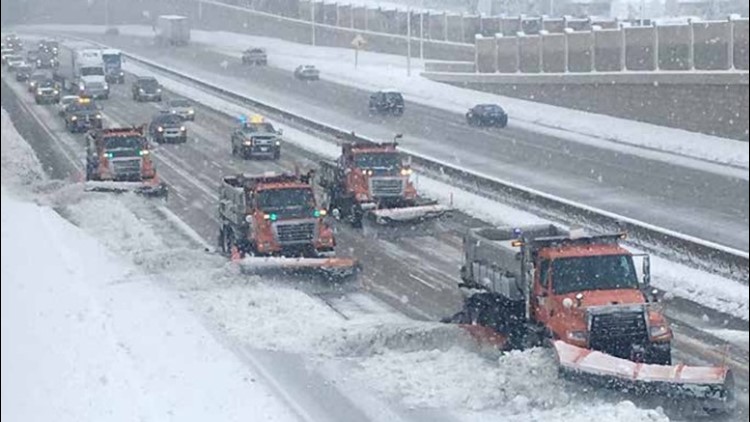ST PAUL, Minn. — To many Minnesotans the winter of 2018-19 seemed like the season that would never end.
Now financial numbers released by the Minnesota Department of Transportation (MnDOT) Wednesday suggest there may be some substance to that feeling. A report says the agency responsible for maintaining the state's highways and byways spent $133 million to keep those roads clear, while dealing with weather MnDOT calls the most severe in a decade.
“The Winter Maintenance Report helps tell the story very clearly: with the fifth-largest roadway system in the country and more extreme weather conditions than most states, it costs a lot of money to maintain transportation infrastructure and keep people moving in Minnesota,” said MnDOT Commissioner Margaret Anderson Kelliher. “I’m so proud of the employees of MnDOT, who worked long hours through challenging conditions to keep our roads safe.”
The annual report breaks down costs, winter severity, snow totals and other stats for each of MnDOT’s eight transportation districts. Among the numbers:
- The statewide snowfall average was 97.2 inches
- There were 31 snow events during the 2018-19 winter season
- Those storms created a statewide Winter Severity Index score of 154 - nearly 40 points higher than during 2017-18 and the most severe since MnDOT began tracking (Winter Severity Index compares nine factors that affect snow and ice removal, including temperature, hours of snowfall, blowing snow and precipitation type)
- More than 1,800 snowplow drivers worked more than 198,000 overtime hours
- MnDOT operated and maintained more than 800 plow trucks
“Snowfall amounts don’t tell the whole story about the challenges MnDOT crews face during winter,” said Jed Falgren, acting state maintenance engineer. “Every area of the state experienced more hours of snowfall compared to the previous winter. Road and air temperature averages were down and hours of freezing rain were up – those elements have a huge impact on how quickly we can clear roads.”
Falgren says drivers exceeded the "bare lane target goals" for all road classifications within 36 hours after a snow event, and used less road salt and sand while doing it. Instead they applied more liquid chemicals (potassium acetate, BEET HEET, Apex-C and RG8) that enhance the performance of road salt during extreme conditions, leading to routes being cleared faster and with less material.
To read the entire snow removal report go to the MnDOT website.



